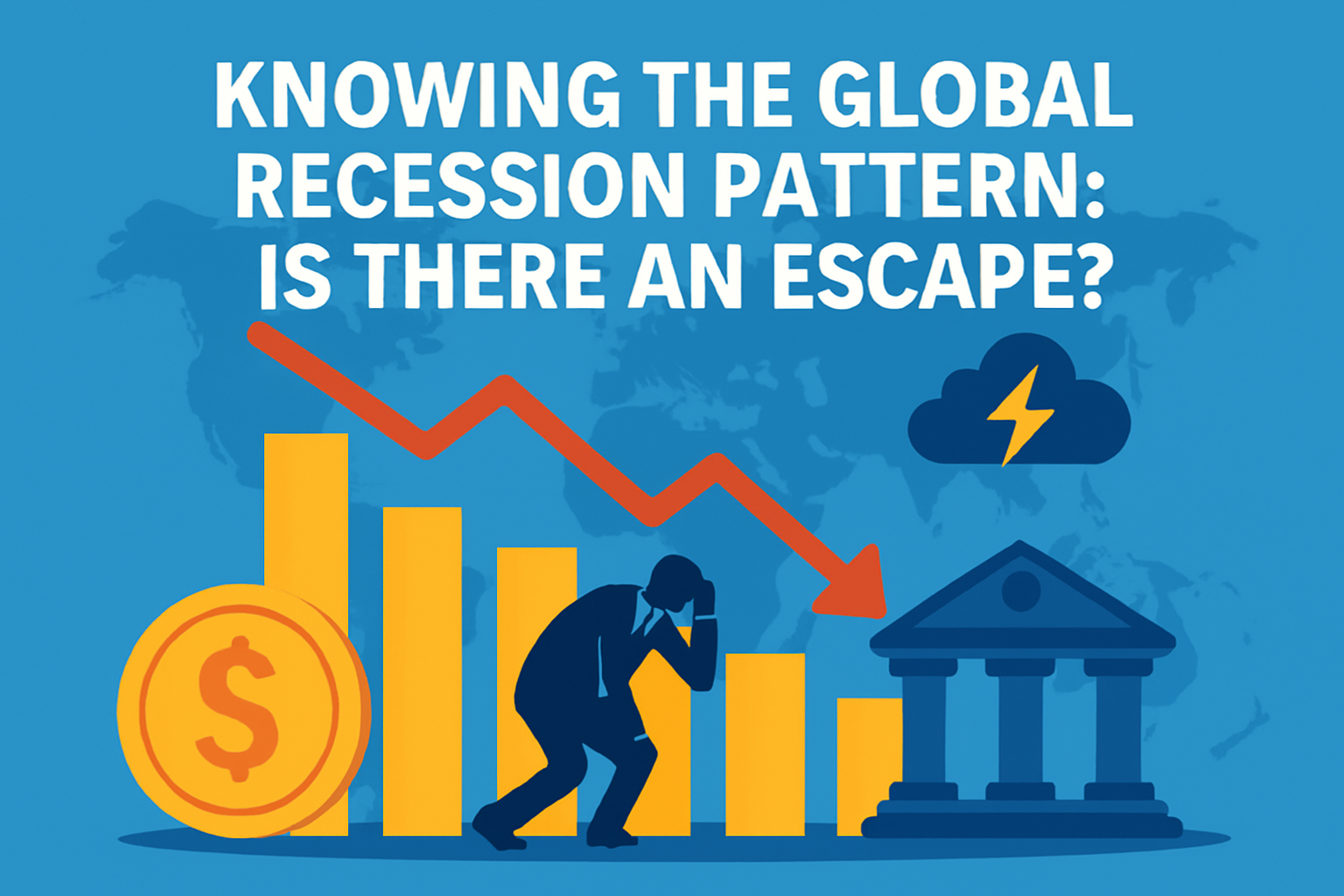Knowing the Global Recession Pattern: Is There an Escape?
Economic recessions have long been viewed as the inevitable ebb in the flow of capitalism—a natural correction after periods of over-exuberance. But as globalization deepens and technological disruptions accelerate, a new question is emerging: can we truly escape the cycle of global recessions—or at least lessen their blow?
To answer this, we need to understand how recessions form, how they’ve evolved historically, and whether new tools—economic, technological, or geopolitical—can help break or soften the cycle.
Understanding the Anatomy of a Recession
A recession is broadly defined as a significant decline in economic activity across the economy, lasting more than a few months. Typically, it manifests in drops in GDP, rising unemployment, falling consumer confidence, and shrinking industrial production.
The National Bureau of Economic Research (NBER) in the U.S. officially dates recessions, but they’re felt globally—and often start in one region before cascading elsewhere due to the interconnectedness of trade, finance, and sentiment.
Global Recession Patterns: A Historical Snapshot
📉 The Pattern: A Rough 10-Year Cycle
Historically, the global economy seems to experience a major downturn roughly every 8 to 10 years:
- 1973–75 Oil Crisis Recession
- 1981–82 Debt Crisis and Inflation Recession
- 1990–91 Gulf War Recession
- 2001 Dot-Com Bubble
- 2008–09 Global Financial Crisis
- 2020 Pandemic Crash
Each recession had unique triggers—oil prices, war, tech overvaluation, housing market collapse, or a global health crisis—but the pattern of boom-bust persists.
The Key Triggers Behind Most Recessions
- Monetary Policy Shifts – Interest rate hikes (to control inflation) often slow down borrowing and spending.
- Asset Bubbles Bursting – Overvalued markets collapse (dot-com, housing, crypto).
- Global Shocks – War, pandemics, natural disasters.
- Supply Chain Disruptions – As seen in 2020–22, fragile logistics can halt global growth.
- Debt Overload – Rising public and corporate debt can strain financial systems under pressure.
Why Escaping Recessions Is So Hard
The cyclical nature of human behavior—risk-taking in good times, fear in bad times—makes recessions somewhat self-perpetuating. Add to that:
- Global Interdependence: A recession in the U.S. or China affects exports, currencies, and demand worldwide.
- Lag in Policy Response: Governments and central banks often act too late.
- Structural Inequality: Recessions hit low-income and developing economies harder, perpetuating instability.
Modern Tools: Can We Break the Cycle?
While escaping recessions entirely may be unrealistic, mitigating their severity is increasingly possible with better tools:
✅ Data-Driven Monetary Policy
Central banks now use real-time data and AI forecasting to act preemptively. The Fed’s quick response in 2020 with stimulus and rate cuts likely avoided a Great Depression 2.0.
✅ Global Coordination
The G20 and IMF now coordinate faster responses across nations, providing liquidity, emergency funds, and coordinated rate adjustments.
✅ Universal Basic Income (UBI) and Safety Nets
Countries testing UBI, like Finland and parts of the U.S., show that resilient social safety nets can cushion the blow of job loss and spending drops during downturns.
✅ Decentralized Finance and Digital Currencies
Fintech and digital banking offer more flexible, inclusive tools that can stabilize individual economies faster—though they also carry new risks.
The New Frontier: AI and Predictive Economics
AI is now being used by hedge funds, central banks, and economists to predict downturns before they happen, analyzing trillions of data points across markets, weather, geopolitics, and consumer behavior.
The goal? A responsive economy that can adjust policies proactively, instead of waiting for disaster.
Example: Google Trends and credit card data have been used by researchers to predict unemployment spikes weeks before official stats.
Is There an Escape? A Realistic View
While completely avoiding recessions might be a fantasy, the nature of recession is evolving:
- From catastrophic to contained
- From global meltdowns to localized disruptions
- From reactive policy to predictive intervention
The real opportunity lies not in escape, but in resilience—building economies, businesses, and policies that can bend without breaking.
What Can Businesses and Individuals Do?
For Businesses:
- Diversify revenue streams
- Invest in digital transformation
- Build cash reserves and reduce debt
- Adopt flexible, remote-friendly operations
For Individuals:
- Stay financially literate and plan for cycles
- Develop multiple income sources
- Invest cautiously—long-term over hype
- Upskill for recession-proof sectors like tech, healthcare, and energy
Conclusion: Recessions Aren’t Optional—But Their Impact Is
We may never fully escape economic downturns, but we can escape their worst effects. The age of passive acceptance is over. With real-time data, AI-powered forecasting, and global cooperation, we’re entering an era where preparedness can replace panic.
It’s not about avoiding the storm—it’s about building a boat strong enough to ride it out.

